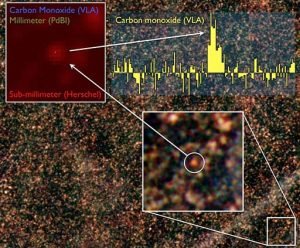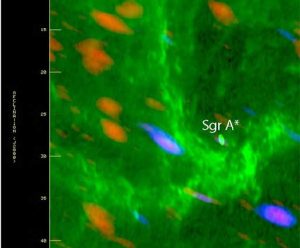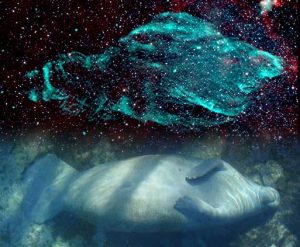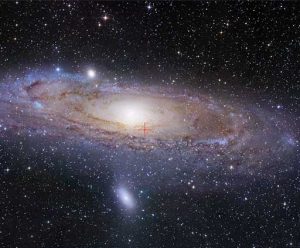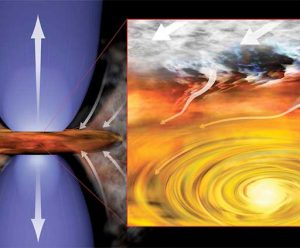Astronomers using a world-wide collection of telescopes have discovered the most prolific star factory in the Universe, surprisingly in a galaxy so distant that they see as it was when the Universe was only six percent of its current age.
ALMA Sees Stars Forming Near Galaxy Core
Astronomers using the Atacama Large Millimeter/submillimeter Array have discovered signs of star formation perilously close to the supermassive black hole at the center of the Milky Way Galaxy.
Microquasar Makes a Giant Manatee Nebula
A new view of a 20,000-year old supernova remnant demonstrates the upgraded imaging power of the National Science Foundation’s Very Large Array and provides more clues to the history of this giant cloud that resembles a beloved endangered species, the Florida Manatee.
ALMA Sees Star and Planets Grow Together
Astronomers have used the ALMA telescope to get their first glimpse of a fascinating stage of star formation in which planets forming around a young star are helping the star itself continue to grow, resolving a longstanding mystery.
Microquasar Found in Neighbor Galaxy, Tantalizing Scientists
For the first time, astronomers have found a microquasar — a black hole devouring material from a companion star — in a galaxy beyond our own Milky Way.
Astronomers Discover and Weigh Infant Solar System
Astronomers have found the youngest still-forming solar system yet seen, an infant star surrounded by a swirling disk of dust and gas more than 450 light-years from Earth in the constellation Taurus.






